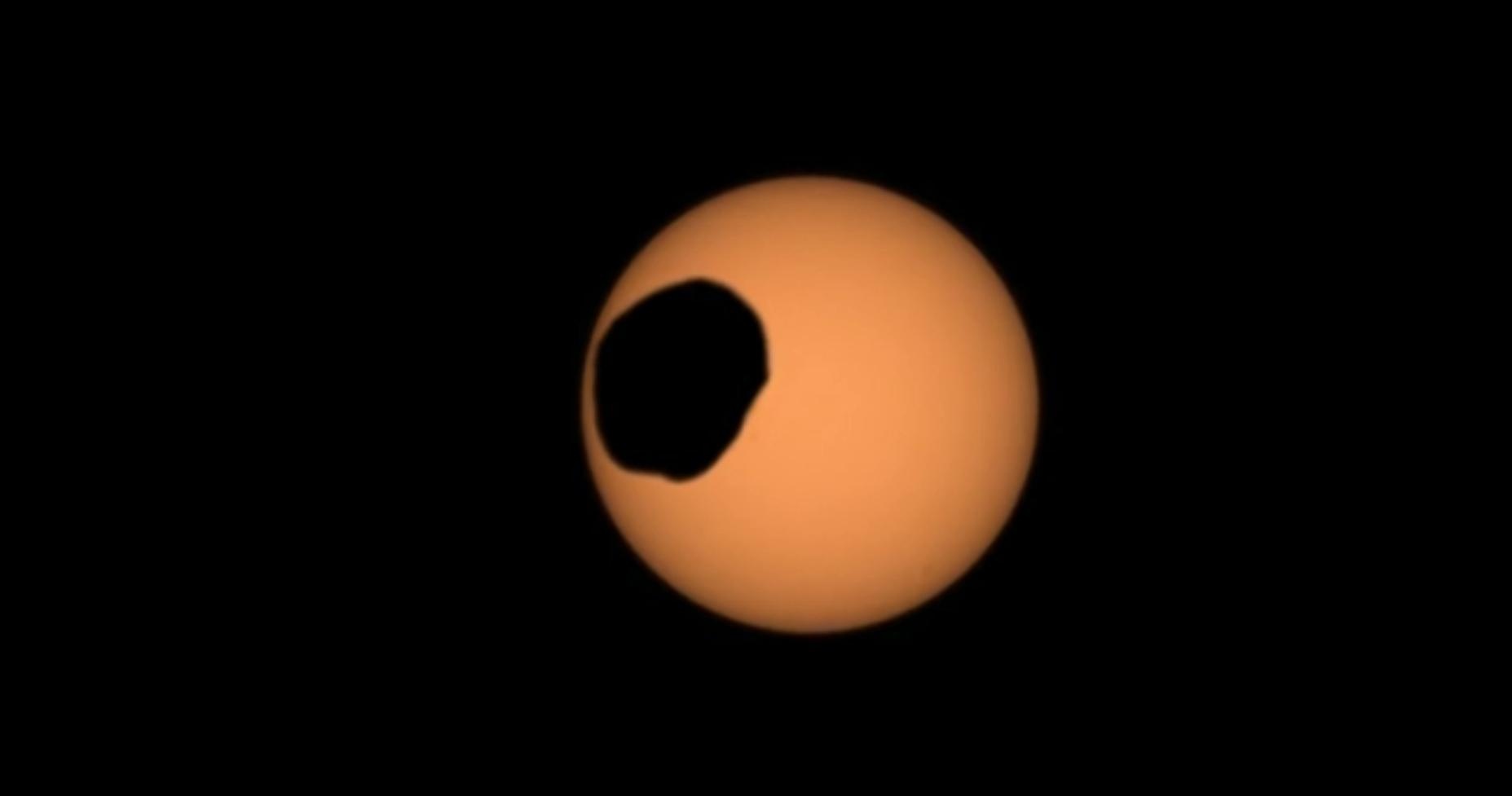NASA’s Perseverance rover is busy exploring the Martian surface and collecting samples for eventual return to Earth. But the rover recently took some time to gaze upward and observe the heavens. Using Mastcam-Z, the rover’s primary science camera, Perseverance captured Phobos, Deimos, and Mercury as they transited in front of the Sun.
Phobos and Deimos are unusual. They’re lumpy and are often referred to as ‘potato-shaped.’ They’re quite close to their planet as moons go, and they’re most likely captured objects, either asteroids or chunks of debris from the Solar System’s early days. They’re also small for primary moons, and both are tidally locked to Mars.
They share the same composition as carbonaceous chondrite asteroids and also have low albedoes. Both those traits bolster the captured asteroid argument. Phobos has the more unstable orbit of the two, and that reflects a more recent capture. Some think that Phobos and Deimos may have been a single object that only broke into two when it was captured.
But, some aspects of Phobos go against the capture theory. It contains some of the same phyllosilicate minerals that Mars does. This points to an alternate formation. A powerful impact could’ve lofted Martian debris into orbit, and the debris could’ve coagulated together to form the small moon. That may have been how Earth’s Moon formed.
On the other hand, both moons have circular orbits near the Martian equator. That hints at a more complex past, including an impact or the involvement of a third body.
The animation below shows Phobos transiting in front of the Sun.
Phobos, in particular, may be in trouble. It’s already the closest moon to any planet in the Solar System, and its orbit is lowering, slowly bringing it closer to Mars. At some point, around 50 million years from now, it’ll breach the Roche limit. Then it’ll either crash directly into Mars or it’ll break apart and form a dust ring around the planet. Either way, it’s game over.
Deimos’ future is different. While Phobos orbits at an altitude of about 6000 km (3700 miles), Deimos is much further away. It orbits at an altitude of about 23,500 km (14,600 miles). So, while Phobos is drawing closer to Mars and to its own eventual destruction, Deimos is slowly drifting away. In the distant future, Mars will lose Deimos.
The animation below shows Deimos transiting the Sun. This video is sped up because Deimos takes more than two minutes to transit.
NASA’s Mars rovers have captured many of Phobos and Deimos’ transits over the years. There’s more to the effort than just their novelty. Repeatedly capturing these transits informs scientists about their orbits over time.
Mars and Deimos are odd and mysterious. Monitoring them as they transit could help slowly dispel some of the mystery. What we really need are samples.
Russia sent a sample mission to Phobos with the unfortunate name of Phobos-Grunt. They launched it in 2011, but rocket burns needed to send it to the moon failed, and the craft eventually plunged to its destruction in the Pacific Ocean. (For some reason, Roscosmos tried to blame foreign saboteurs, by which everyone assumed he meant the USA.)
Japan is planning to launch a mission to Mars’ moon in 2026. It’s called the Martian Moons eXploration mission, or MMX, and it’ll obtain a sample of Phobos and return it to Earth in 2031.

Those samples could help us finally determine where the moons came from.
Perseverance also watched as Mercury transited the Sun. The images are here.

